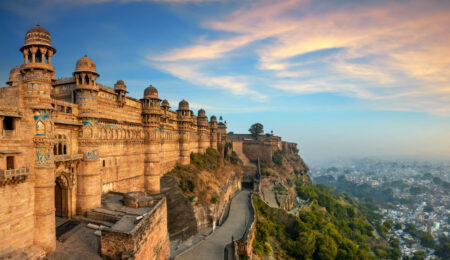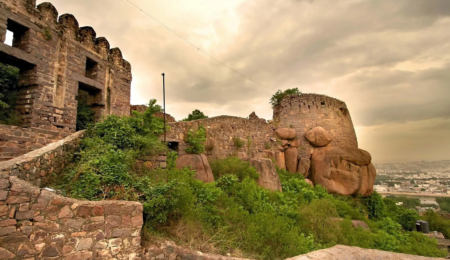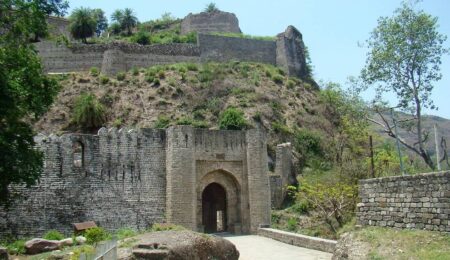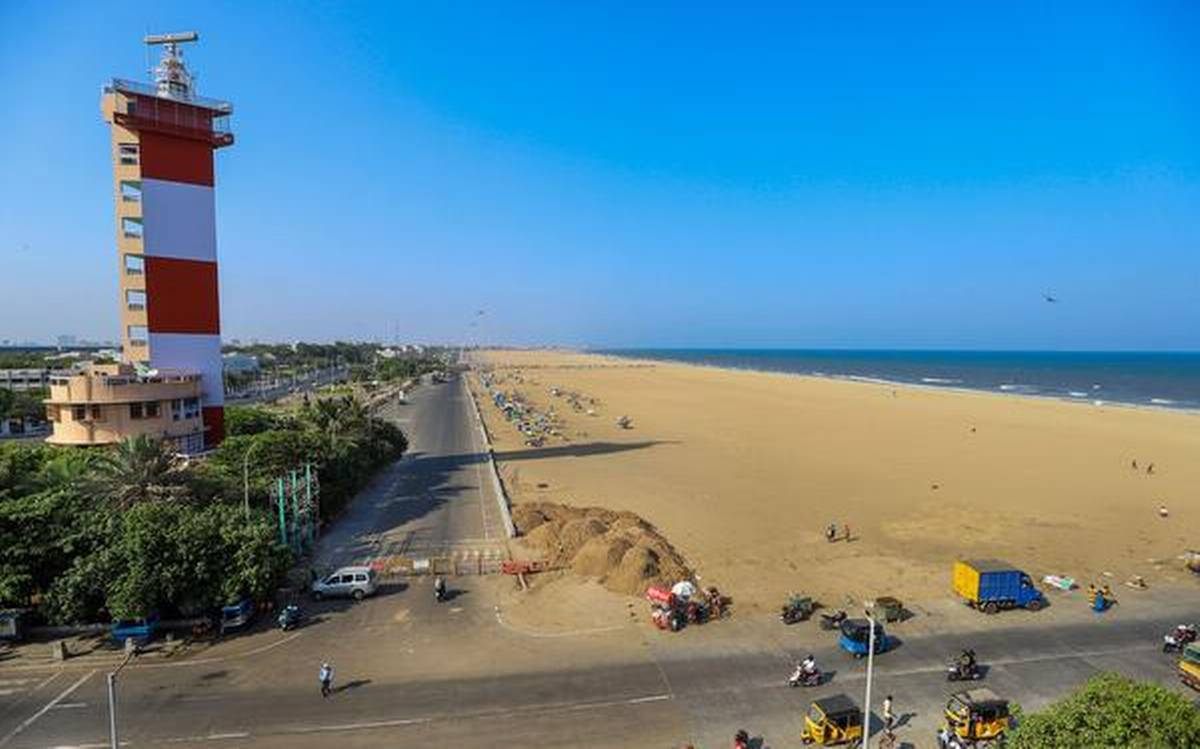 Chennai, the Cultural Capital of India is the fourth largest metropolis in the country, The present town was founded in 1639, by Sir Francis Day, who arrived with East India Company. The British East India Company established a fort and a trading post at the small fishing village of Chennai. Today, it has emerged as a major industrial and educational center.
Chennai, the Cultural Capital of India is the fourth largest metropolis in the country, The present town was founded in 1639, by Sir Francis Day, who arrived with East India Company. The British East India Company established a fort and a trading post at the small fishing village of Chennai. Today, it has emerged as a major industrial and educational center.
Fort St. George: The first bastion of British power in India was built in 1640 and is a fine example of 17th-century British military architecture. The fort now houses the State Legislative Assembly and Council as well as offices of the Secretariat.
Fort Museum: It is housed in an 18th-century building within the fort and showcases the history of British in India.
St. Mary’s Church: It is the oldest Anglican church in India, perhaps in entire Asia, and the oldest surviving construction of the British in India. The church was consecrated in 1680 and houses several outstanding examples of workmanship of considerable historic as well as of aesthetic value.
Marina Beach & Aquarium: The sandy beach is considered to be the second-longest in the world. It extends up to 13 kms. and is lined with majestic buildings built in Indo- Saracenic architecture. The memorials of Anne and MGR are also located here.
Sri Parthasarthy Temple: The ancient temple at Triplicane, near the Marina Beach, is one of the 108 sacred shrines of Lord Vishnu. Lord Krishna is worshipped here as Parthasarthy of the charioteer (sarthy) of Arjuna (Partha). The present structure is said to be about 1500 years old, which makes it the oldest temple structure in the city.
San Thome Cathedral Basilica: This landmark of Chennai is one of the three basilicas in the world to be built over the tombs of Christ’s Apostles. St. Thomas, an apostle of Christ was buried here in a chapel. The present structure was built in the neo-Gothic style by the first Bishop of Mylapore, Dom Henriques Reed de Silva in 1898. Its two spires rise to 55 meters, dominating the skyline.
Kapaliswarar Temple: The 8th-century shrine at Mylapore is dedicated to Arulmigu Kapaliswarar, an aspect of Lord Shiva. This biggest temple of Chennai was built by the Pallavas and further additions were made during the rule of the Cholas, Pandyas, and the Vijayanagara kings. Its fortifications were done by the French in 1672. against the Dutch forces. The splendid shrine displays a typical Dravidian style of architecture, with beautiful gopurams, mandapams, and tanks. Its imposing seven storeyed gopurams (tower) over the main entrance rises to a height of37 meters.
Wallajah Mosque: The magnificent mosque flanked by two minarets with golden domes was built in 1795, by Muhammad Ali Khan Wallajah. the Nawab of Carnatic. Nearby. are the tombs of former Nawabs of Carnatic.
Thousand Lights Mosque: The majestic Shia Muslim mosque was originally built in the 17th century by the members of the Wallajah family. The shrine gets its name from the thousand lamps that used to be lit at twilight in the old mosque.
Govt. Museum, National Art Gallery & the Connemara Library: It is housed in the magnificent Pantheon Complex built before 1789, in Indo – Saracenic style. The museum has sections on geology, archaeology, anthropology, botany, zoology, numismatics, sculpture, and armory. The National Art Gallery nearby has an impressive collection of old paintings and modern art.
Valluvar Kottam: The beautiful memorial honors Thiruvalluvar, one of the most renowned Tamil poet and sage. It was built in 1976 and is a replica of a temple chariot in Thiruvarur. There are three levels the lower level has an Aranga Mandapam (auditorium), with a seating capacity of 4.000. The next level consists of the Thirukkural balcony, where 133 granite slabs bearing 1330 kurals (couplets) of the Thirukkural are mounted on 67 pillars around the big hall. At the third and highest level, a 1.5 meters high Kalamkari painted dome crowns the massive 2700 ton sculpted granite chariot.
Guindy National Park: It covers an area of 270 hectares near Raj Bhawan and is the smallest National Park in India. The park is home to the blackbuck, an endangered species. Other faunas seen here are spotted deer, civet cat, jackal, etc.
Snake Park: It is located next to the National Park and is first of its kind in the country. Snake demonstrations are also held every hour in a pit near the entrance.
Litle Mount: It is believed that St. Thomas, the Apostle prayed and preached on this hillock, along the south bank of Adyar, near Saidapet. The hillock has a natural rock cave where the Apostle is said to have lived for a while, two churches and a grotto enshrining Our Lady of Lourdes’.
St. Thomas Mount: The holy hill near the road to the Meenamabakkam airport center 13 kms. from the city centre. It was here on a fateful day in the year 72 A.D., the Apostle was pierced to death with a lance by his persecutors.
Kalakshetra: This Temple of Arn’ is one of the most important schools of classical Indian music and dance. It is situated near the Theosophical Society and was started in 1936, by Bharatnatyam danseuse Rukmini Devi Arundale. Weaving and Hand-Woven textiles are also the specialized subjects of study at this center.
Elliot Beach: The beautiful beach near Besant Nagar, Adyar is quieter, cleaner, and relaxing as compared to the famous Marina. Other attractions near the beach are – Annai Velankanni Church and Ashtalaxmi Temple.
Birla Planetarium: One of the most modern planetariums of India.
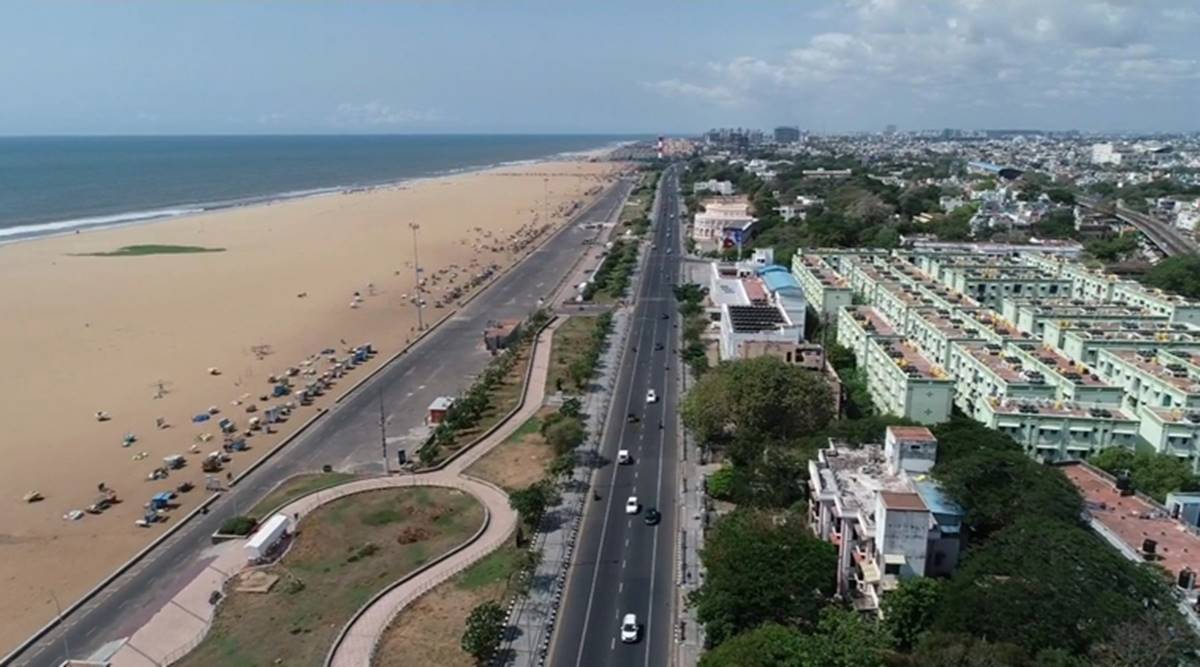 Around Chennai
Around Chennai
V.GP.Golden Beach (20 kms.)
The beautiful beach resort offers plenty of entertainment to young and the old alike. It is also a favorite film shooting location as there are artificial waterfalls, larger than life stucco sculptures, and picture post-card settings.
Cholamandal Artist’s Village (20 kms.)
The Artist’s Village along the coastal road was established in 1965, to promote and develop contemporary art. Permanent exhibitions of paintings, sketches, terracotta sculptures, batiks, and other crafts are held here.
Dakshina Chitra (32kms.)
It lies 12 kms. south of Cholamandal, overlooking the Bay of Bengal. The center established in 1984, has sections for Tamil Nadu, Kerala, Andhra Pradesh, and Karnataka and provides a complete insight into the rich cultural heritage of the South. The secluded backwaters at Muttukadu, just 500m north of Dakshina Chitra are an excellent site for picnics, boating, and other water sports.
Anná Zoological Park, Vandalur (35 kms.)
The zoo spreads over an area of 1,265 acres and is said to be the largest in South Asia. It attempts to provide a natural habitat to several species of animals and birds. A ropeway and mono-rail, a lion and bison safari park, nocturnal animal house, a natural museum, and an aquarium are other attractions of this impressive zoo.
Pulicat Lake & Sanctuary (60 kms.)
This ‘paradise’ for bird lovers covers an area of 500 sq. kms., on the Tamil Nadu – Andhra Pradesh border. It comprises of mostly a lagoon and stretches of marshy land on the Coromandel coast. The vast brackish water Pulicat Lake attracts a large number of migratory and resident birds like greater and lesser flamingoes, grey pelicans, open- billed storks, spoonbills, little cormorants, ducks, seals, terns, gulls, etc. Boating facilities are also available. The reserve forest area has animals like jackals, slender loris, spotted deer, monitor lizard, tortoise, cobra, Russel viper, etc. Pulicat is 10 kms. from Sullurpet railhead and lies on the Chennai- Kolkata road.



